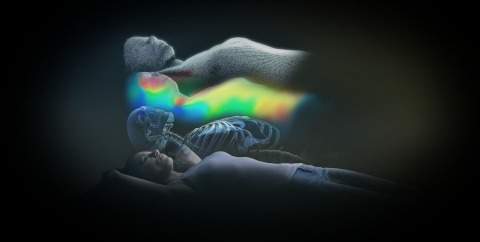
ExacTrac Dynamic is the next generation of ExacTrac X-Ray designed to address a full range of patient positioning and monitoring needs with the support of multiple systems that can be combined with different internal tracking and surface scanning technologies.
It incorporates with a range of high-end linear accelerators to deliver high precision tracking and verification and solve the problems associated with treating moving targets.
Brainlab has developed the concept by collaborating with several experts in radiation oncology.
The new high-speed surface tracking solution integrates 300,000 3D surface points to externally monitor patient position and detect movement during treatment.
Each of the surface points captured by the ExacTrac Dynamic structured light system will be matched to a heat signal produced generated by thermal camera, enabling to create another dimension for tracking the patient’s position consistently and accurately.
The advanced surface tracking with ExacTrac Dynamic will not be affected by room lighting, reflections or skin tone.
The integrated X-Ray monitoring with ExacTrac Dynamic will also verify the patient’s position internally with real-time imaging, in addition to external tracking.
ExacTrac Dynamic provides additional workflows to monitor additional workflows such as deep inspiration breath hold and internal anatomy verification.
With three moldable thermoplastic mask options, the ExacTrac Dynamic solution will also simplify frameless fixation.
Deep integration with linear accelerators from both Elekta and Varian Medical Systems enable positioning and monitoring workflows to function seamlessly, including automatic patient loading, gantry triggered imaging and automated beam-hold.
The company is exhibiting the new ExacTrac Dynamic system at the Society for Radiation Oncology (ASTRO) meeting in San Antonio, Texas, which is being held from 21 to 24 October.
Brainlab president and CEO Stefan Vilsmeier said: “We’ve taken a quantum leap forward with ExacTrac Dynamic, delivering a solution that addresses a full range of patient positioning and monitoring beyond what is achievable with linear accelerators alone.
“This positioning technology will be an influential force in moving precision radiotherapy forward, with a well-engineered, user-centric workflow and GUI design.”






